Valentine’s Day is a time for love, and what better way to express it than with a stunning piece of jewelry? This year, almost a quarter of shoppers plan to gift jewelry to someone special, and spending for the jewelry vertical is expected to reach $5.5 billion.
Learn about 17 steps jewelry eCommerce brands and retailers can take before, during, and after Valentine’s Day to create an unforgettable shopping experience and capture the attention of jewelry buyers on the hunt for the perfect gift.
1. Create Anticipation Through Email, SMS, and Social
Build excitement for Valentine’s Day by informing shoppers of your promotions and deals. You can connect with customers through social media posts or get them in the shopping mood through personalized messages, be it through text or email. For example, Kay Jewelers Outlet is drawing in consumers with discounts via email and adding links to items segmented by price. A carefully planned email strategy is worth the investment, as half of all shoppers make purchases at least once monthly because of marketing emails.
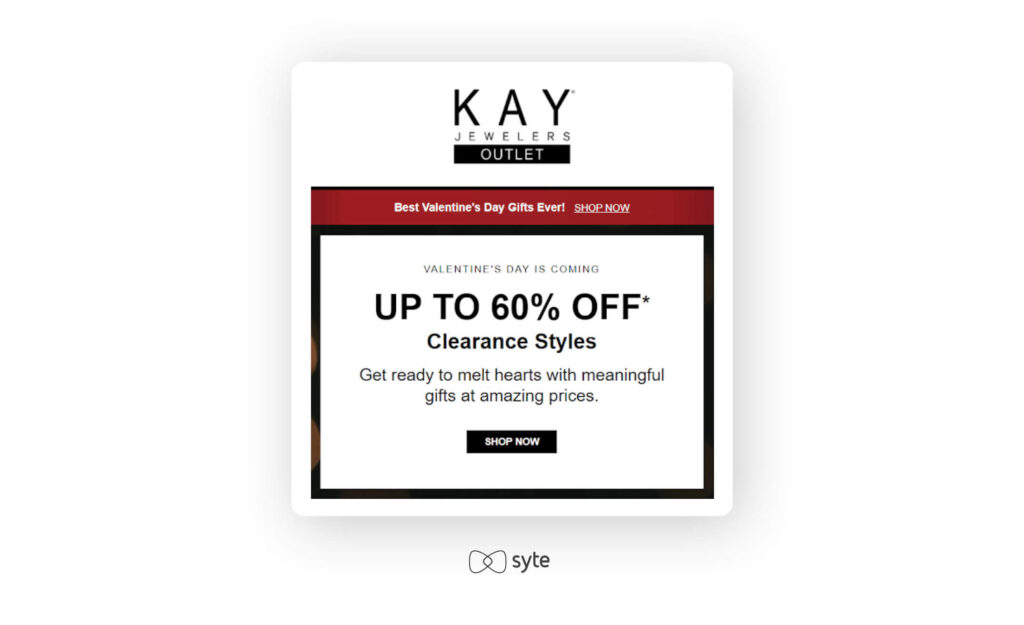
2. Streamline the Shopping Experience With Updated Site Navigation and Filters
Making it easy for shoppers to find the products they want is critical because they can quickly bounce to a competitor if their experience is unsatisfactory. Ensure your page is easy to explore – 38% of consumers look at navigation links when visiting a site for the first time. You can eliminate friction for Valentine’s Day shoppers by displaying prominent links directing them to special landing pages. H. Samuel spruced up its navigation bar and featured a special icon leading customers to a page showcasing Valentine’s Day items.
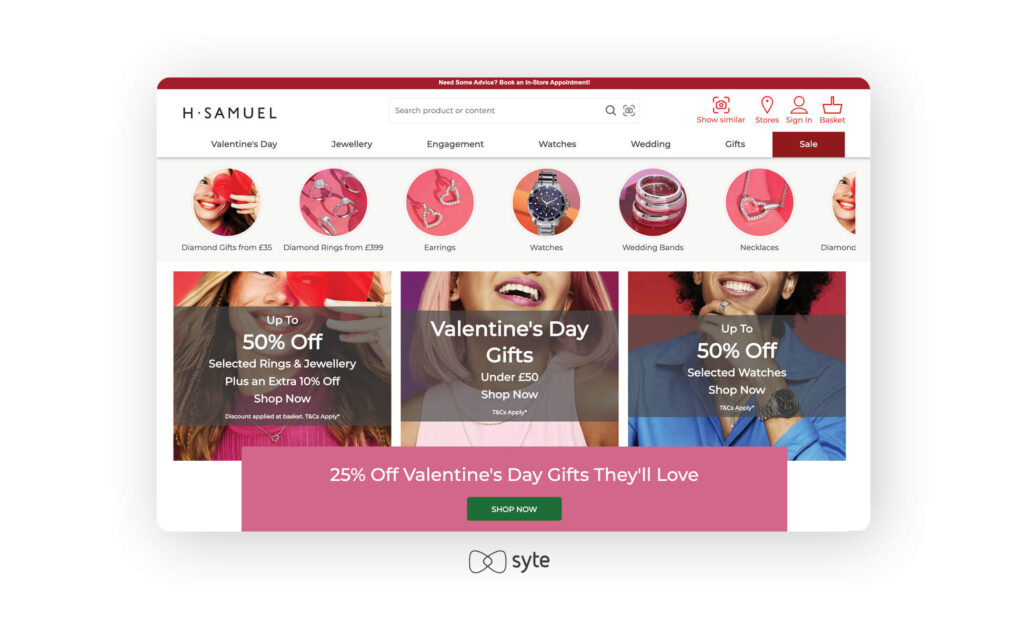
3. Remove Dead Ends on Your Site
Having stockouts or zero search results can be inevitable, but they hurt your potential for profit. At least a third of consumers feel out-of-stock items negatively affect their shopping experience.
Keep your customers moving forward by turning dead ends into opportunities to jumpstart the shopping journey and urge shoppers to continue browsing. You can strategically place recommendation carousels like “Shop Similar” to help customers locate similar items. Ernest Jones preemptively prevents dead ends with a filter that removes out-of-stock items in search results and provides relevant recommendations.
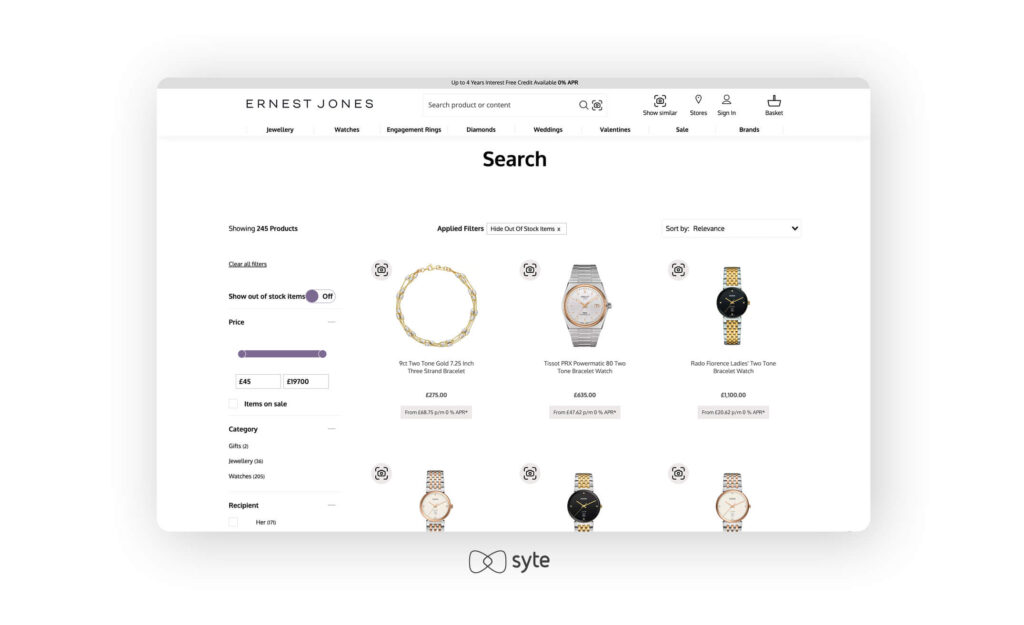
4. Elevate Your Visibility With an Improved SEO Strategy
Top search engine results boost brand awareness, and more than half of shoppers use Google to discover new brands. To improve your jewelry site’s ranking on search engines, you can begin by enhancing your site’s SEO. Among the ways to achieve this is by using relevant keywords that can be indexed by search engines, as well as high-quality images that appear when shoppers search for jewelry.
For example, Jared uses words like “hearts” or “engagement” as part of its Valentine’s Day messaging. AI-powered tagging can also help streamline the process by automatically organizing your inventory and assigning relevant attributes from image data.
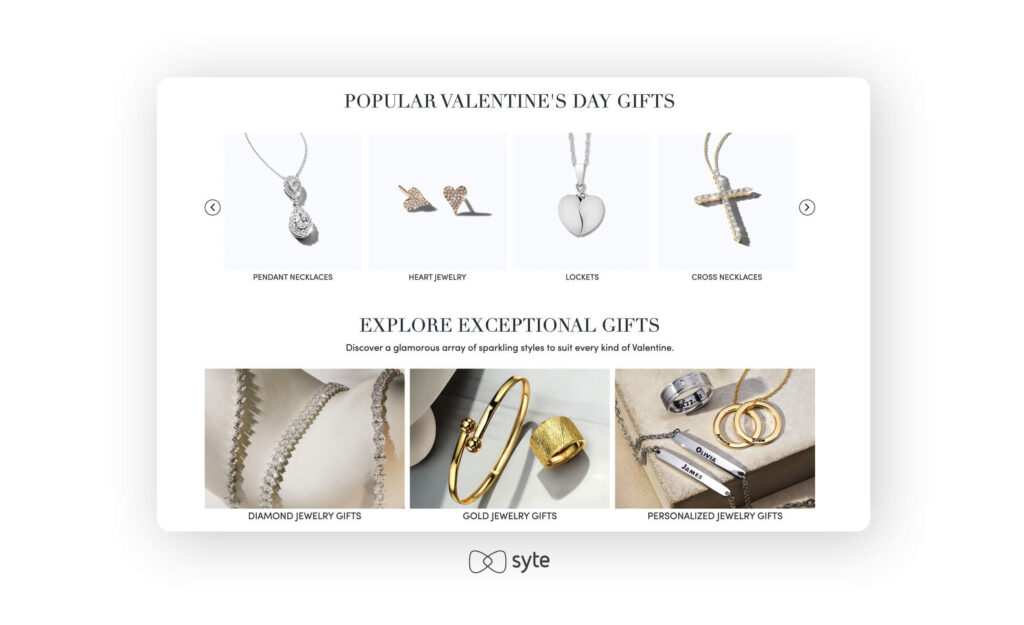 5.
5.
5. Fine-Tune the Mobile Experience
Making the mobile buying experience as seamless as the desktop experience can help attract more customers. Shoppers typically prefer mobile phones for the ease of browsing. At least 59% say that buying on mobile is an important consideration when choosing where to shop. Farfetch is a great example — the eCommerce site has a dedicated app with special features, such as a Swarovski Valentine’s Day gifting edit.

6. Empower Customers With Visual Search
Customers won’t always know the right terms to describe a product, but they might have a picture of the item they’d like to buy. At least 36% of consumers say they’ve used visual search and found images more valuable than text when shopping. Urge shoppers to take advantage of Image Search like Marc Orian. A tool tip pops up when hovering over the camera icon, with a landing page designed especially for the feature.
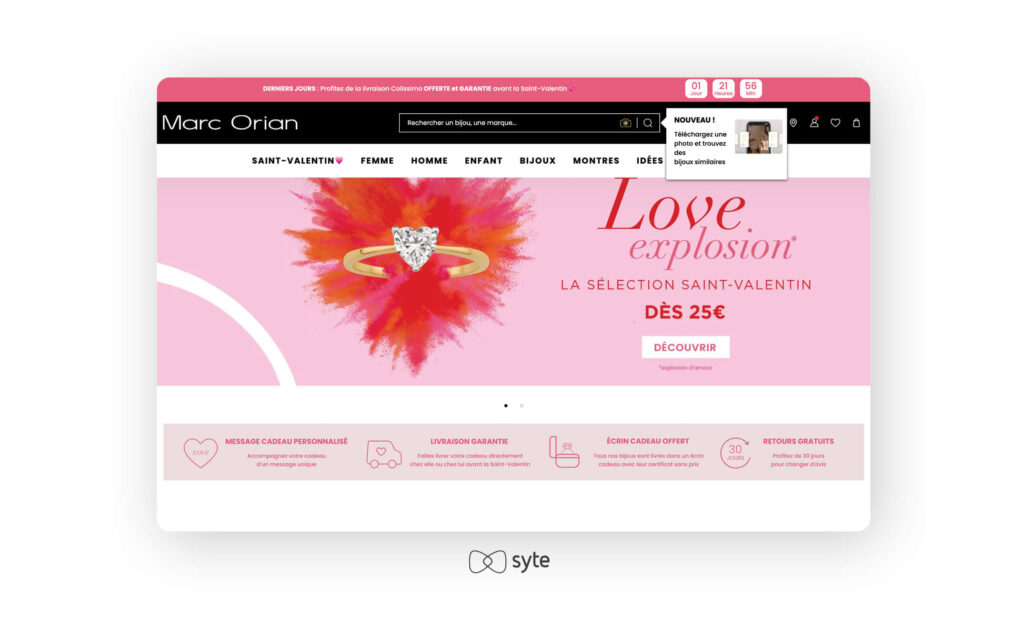
7. Optimize Your Site for Seamless Product Discovery
Shoppers won’t typically leaf through page after page of products. You can optimize your site to get the most value from their time and motivate them to purchase. Strategic visual merchandising can make a customer’s jewelry search easier, for example, by displaying relevant items based on real-time shopper intent and on-site behavior. Recommendation Carousels such as “Shop the Look” and Agatha’s “Vous Aimerez Aussi” (“You May Also Like”) can also surface other relevant products, making about 75% of shoppers more willing to buy.
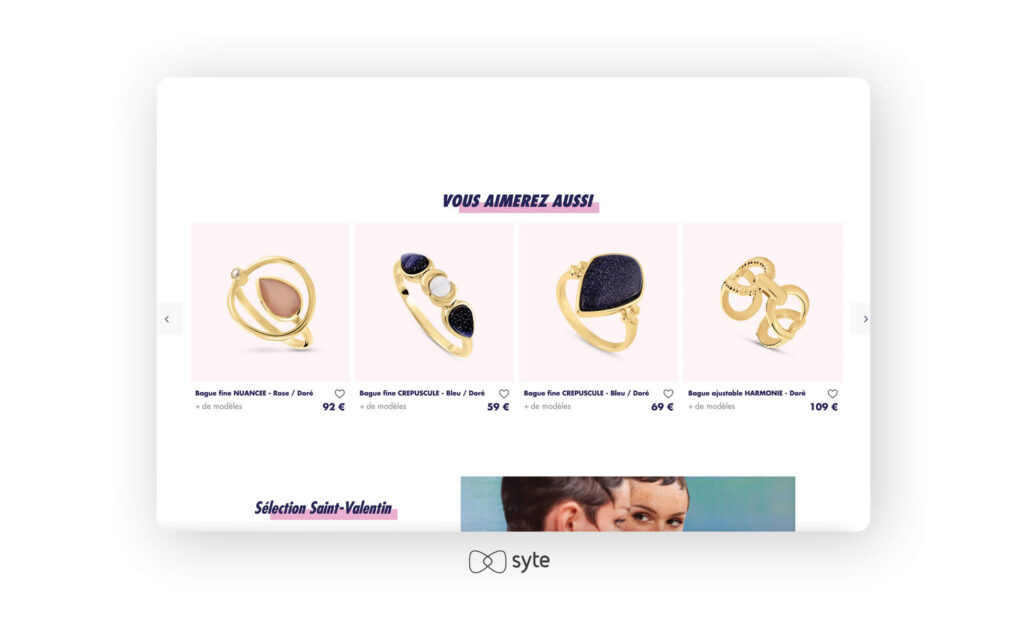
8. Create Persona-Based Galleries to Inspire Site Exploration
Guide customers to the perfect jewelry gift through inspiration galleries, such as Orovivo’s page for shoppers looking for ideas on what to purchase for loved ones. Half of online shoppers say images helped them decide what to buy. This can keep decision paralysis at bay, which is likely to happen with cluttered search results. Customers can also discover more items to complete a look, which increases basket size.
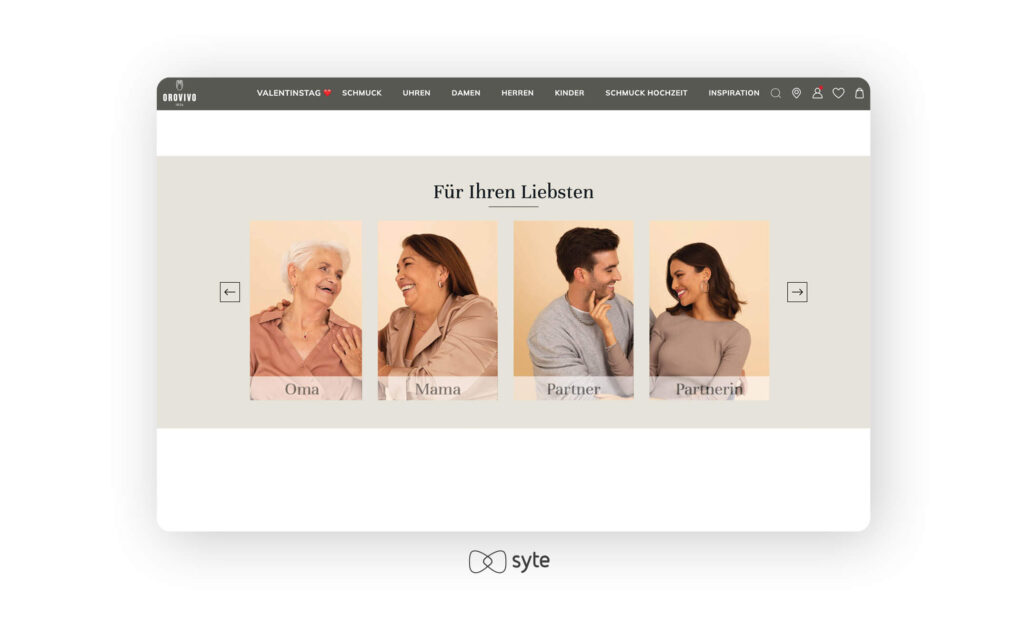
9. Guide Customers With Informative Content
Adding educational resources can position your brand as an industry expert and better inform customers throughout the purchase journey. This can come in the form of a blog post or an interactive quiz. Rare Carat opts for the latter, with a questionnaire catering to visitors who are clueless about jewelry. Informative pages also open up opportunities to include shoppable content and item suggestions based on specific criteria.
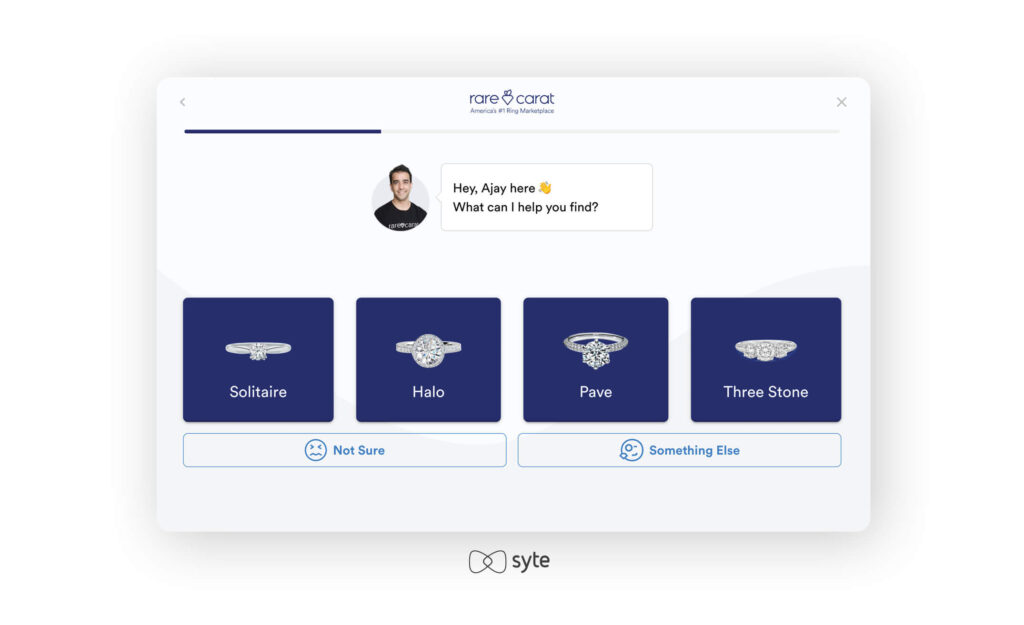
10. Make Finding Valentine’s Day Deals Effortless
For price-sensitive shoppers, you can create a filter or page for discounted items. This makes it easy for customers to find sale products. Histoire d’Or advertises products included in the holiday deal with a banner that redirects to a page for Bijoux Saint Valentin. In adition to quick filters for gifts, the brand also encourages using Image Search to zero in on the best Valentine’s Day gifts.
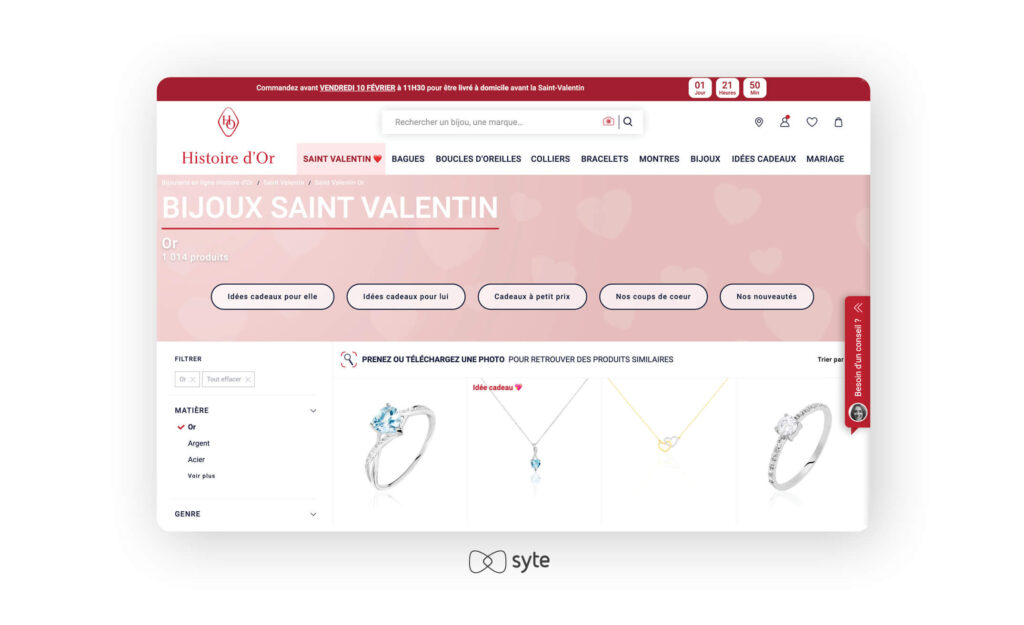
11. Build Trust Throughout the Shopper Journey
Jewelry is often a big-ticket purchase, so customers will have reservations about purchasing online. You can ease shoppers into online shopping with tools that increase trust, such as virtual try-on tools and 360-degree product views. VIP consultations and clear return and exchange policies also boost customer confidence. Stroili is upfront with its policies on the homepage, emphasizing free shipping, free returns within 60 days, flexible payment options, and verified customer ratings.
12. Highlight Social Proof to Boost Jewelry Shopping
Today’s shoppers, particularly younger customers, have become increasingly skeptical of brand marketing and advertising. Trust Pilot found that millennials trust user-generated content (UGC) 50% more than original branded content. Social proof, such as reviews and social media content from verified buyers, can instill more trust and confidence in shoppers. Rocksbox features reviews on every product detail page (PDP), so interested consumers have more realistic expectations.
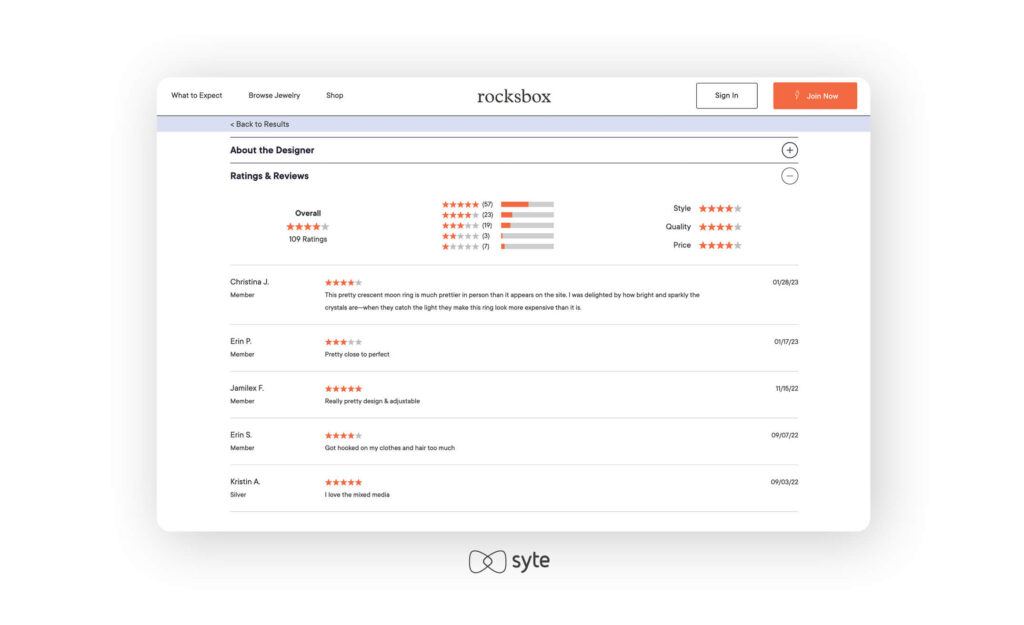
13. Prevent Cart Abandonment With a Nudge
The luxury industry has one of the highest cart abandonment rates. In 2022, the category accounted for 87.9% of abandoned carts. Shoppers drop off eCommerce sites for various reasons, be it high delivery fees, better deals elsewhere, or a change of heart, but these can be remedied with the right tools. A pop-up with an exclusive discount to complete the order or a retargeting email can motivate shoppers to come back. Histoire d’Or displays a popup encouraging shoppers to leave their emails so they don’t miss out on items they added to their carts.
14. Anticipate Needs All the Way to Checkout
At the final step before checkout, customers can be presented with product recommendations that complement their cart items. This can encourage additional purchases and help shoppers reach the minimum threshold for perks, such as free shipping. Upselling and cross-selling efforts, such as suggesting earrings matching a necklace, sway many shoppers at this stage. 49% of consumers say they’ve purchased products they didn’t initially intend to buy because of personalized recommendations. Luisaviaroma uses pop-ups to suggest items once a product is added to a customer’s bag.
15. Express Appreciation for Customers’ Business
Online jewelry stores should create value and exceptional experiences to convey their understanding of customers’ wants and needs. Loyalty programs encourage repeat purchases with the promise of points or other benefits such as limited releases or exclusive discounts. At least 75% of consumers favor a brand if there’s a loyalty program. For Reeds, this comes in the form of a Reeds credit card, which offers more rewards and financing options.
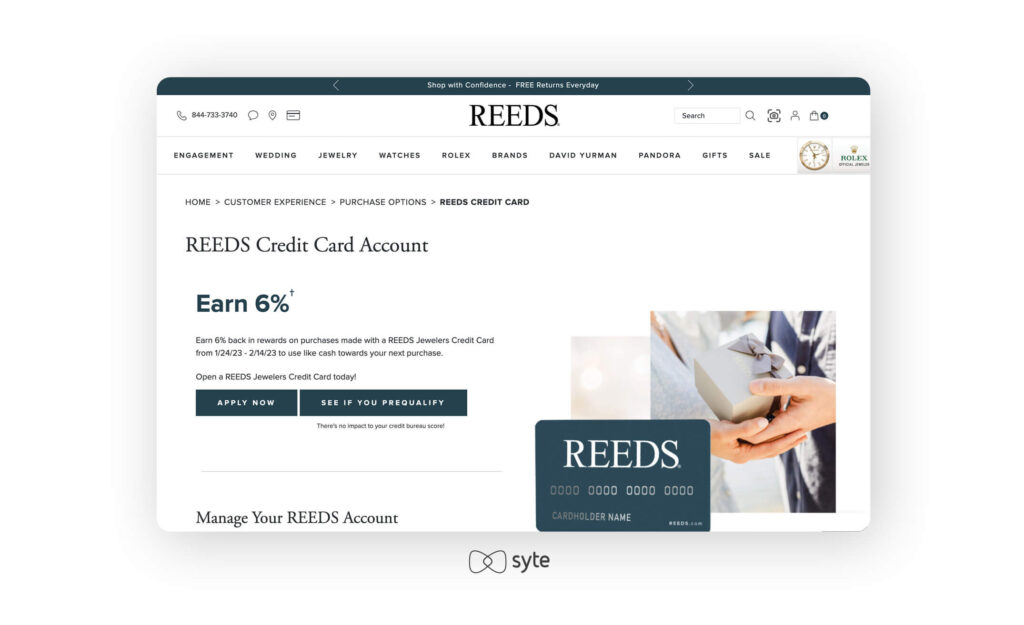
16. Ask Customers for Their Feedback
Let shoppers know you haven’t forgotten them by asking for their feedback. Asking for reviews can increase engagement, improve the shopping experience, and build trust and transparency. Let shoppers know they have a voice in your business — be it through email or dedicated pages for customer feedback. Seventy seven percent of users would leave a review if asked. Zales details the steps and incentivizes feedback with a chance to win a gift card.
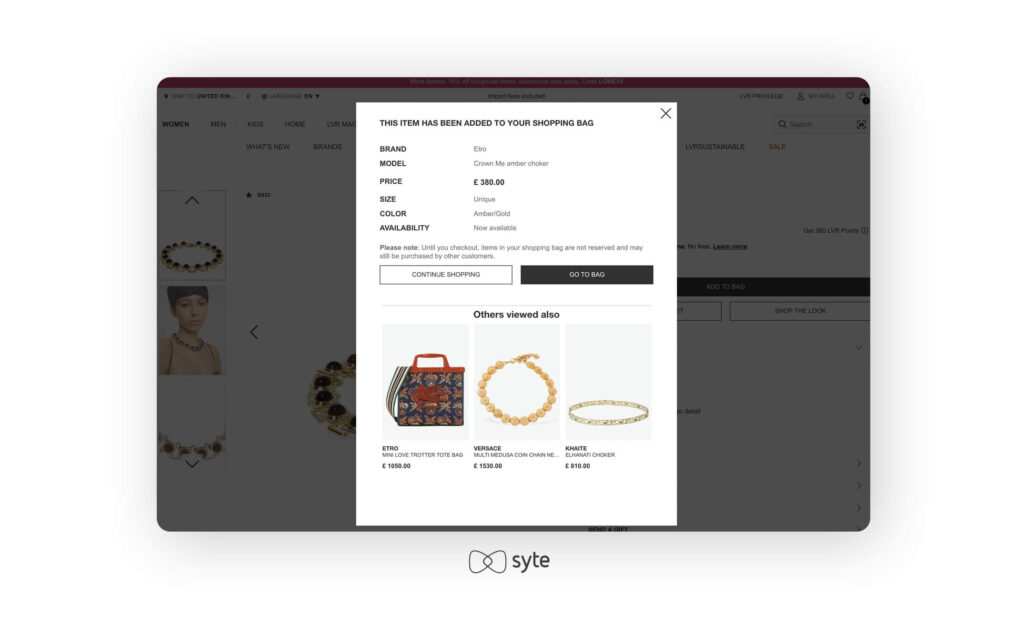
17. Offer What Customers Want
Customer opinions aren’t the only means of learning what shoppers want. Visual AI-backed functions such as AI product tagging can also provide a wealth of information that helps determine trends or popular items. Brands can anticipate what to stock up on and make decisions related to product development based on what search data reveals. Using this information, jewelry stores can better align with customer preferences and serve as tastemakers through a brand touchpoint similar to Sokolov’s Trendbook.

Customers have access to many eCommerce options and are more discerning than ever about the brands they buy from. To stand out, retailers must provide value beyond quality products and reasonable prices. The best practices we’ve outlined above can help you achieve that. Understanding shoppers’ needs and creating experiences that make them feel seen can anchor your reputation as a brand they can rely on to make Valentine’s Day special.